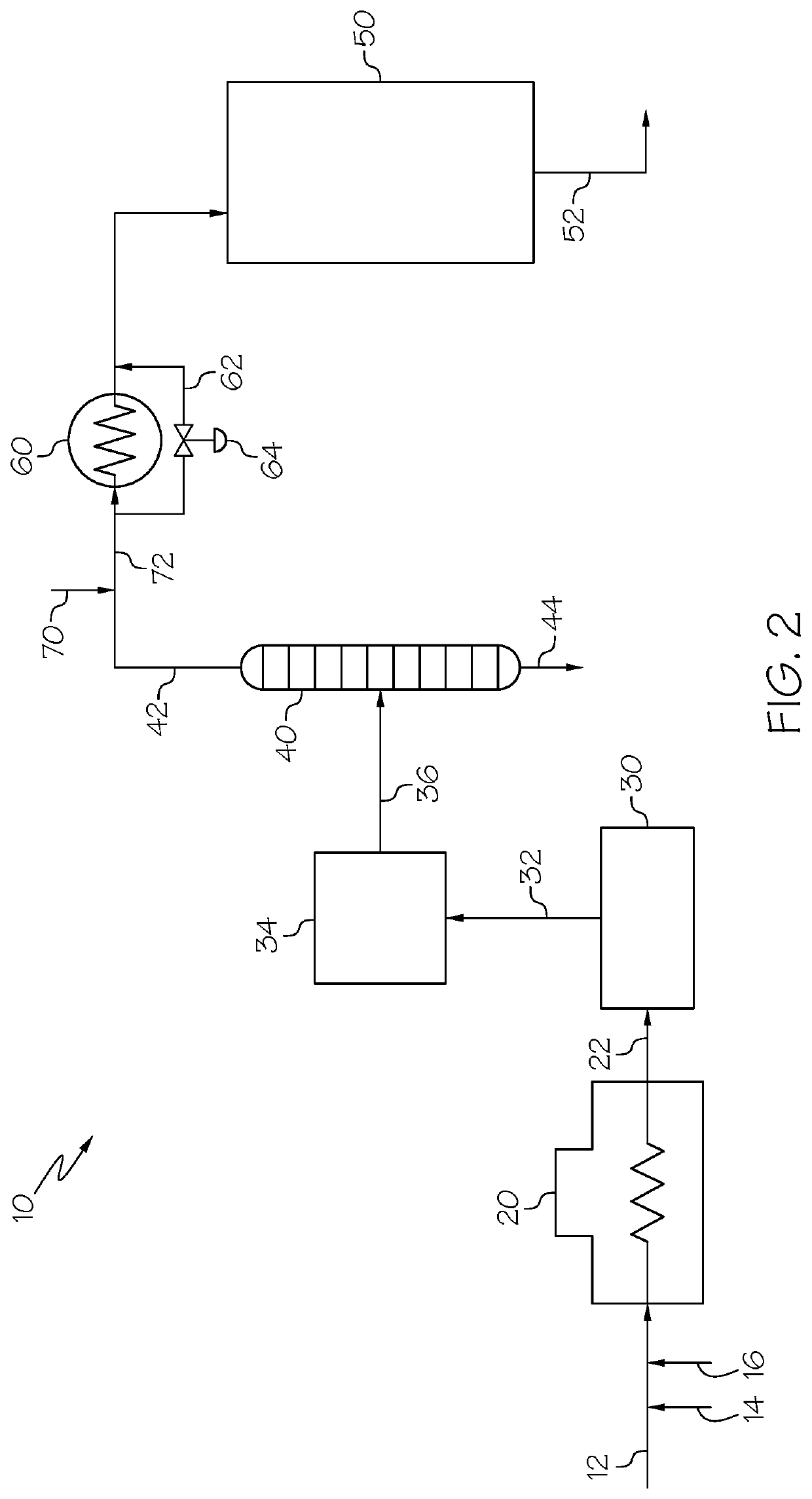Methods for operating acetylene hydrogenation units in olefin production processes
a technology of acetylene hydrogenation and production process, which is applied in the direction of extraction purification/separation, absorption purification/separation, organic chemistry, etc., can solve the problems of frequent change of feedstocks introduced to the steam cracking unit, thermal runaway of the acetylene hydrogenation unit, and excessive capital and operating costs of such an operation, so as to reduce or prevent reduce the probability of thermal runaway or breakthrough
- Summary
- Abstract
- Description
- Claims
- Application Information
AI Technical Summary
Benefits of technology
Problems solved by technology
Method used
Image
Examples
examples
[0078]Embodiments of the present disclosure will be further clarified by the following examples, which should not be construed as limiting on the disclosed and / or claimed embodiments presently described.
[0079]A hydrogenation feed that included hydrogen, nitrogen, ethylene, propylene, carbon monoxide, and acetylene was contacted with a hydrogenation catalyst in a fixed bed reactor at a gas hourly space velocity of 11,000 hr−1. For Example 1, the concentration of hydrogen in the hydrogenation feed was 18 volume percent, and for Example 2, the concentration of hydrogen in the hydrogenation feed was 28 volume percent. The concentrations of nitrogen, ethylene, propylene, carbon monoxide, and acetylene were maintained constant and are provided below in Table 2. Methane was used as the balance gas. The temperature of the hydrogenation feed was adjusted to obtain 94% conversion of acetylene in the hydrogenation effluent passed out of the fixed bed reactor. The temperature required to achiev...
PUM
| Property | Measurement | Unit |
|---|---|---|
| temperature | aaaaa | aaaaa |
| temperatures | aaaaa | aaaaa |
| temperature | aaaaa | aaaaa |
Abstract
Description
Claims
Application Information
 Login to View More
Login to View More - R&D
- Intellectual Property
- Life Sciences
- Materials
- Tech Scout
- Unparalleled Data Quality
- Higher Quality Content
- 60% Fewer Hallucinations
Browse by: Latest US Patents, China's latest patents, Technical Efficacy Thesaurus, Application Domain, Technology Topic, Popular Technical Reports.
© 2025 PatSnap. All rights reserved.Legal|Privacy policy|Modern Slavery Act Transparency Statement|Sitemap|About US| Contact US: help@patsnap.com



